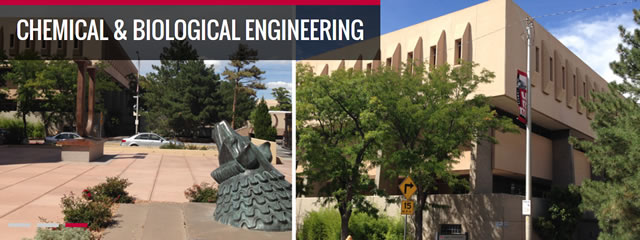
Chemical and Biological Engineering ETDs
Publication Date
1-31-2013
Abstract
Polymer electrolyte membrane fuel cells are a promising alternative energy source, capable of being deployed as successful replacements in many stationary and mobile applications. These devices, however, lack durability, and this has become one of the limiting factors for commercialization. Many projects have focused on finding ways to improve their lifetimes, but few have tried to examine the underlying causes behind their corrosion. The goal of this project was to identify which parameters have a significant impact, both positive and negative, on PEMFC durability. To do this, three series of samples were analyzed using microscopic, spectroscopic, and electrochemical methods. Electron microscope images provided information on the sample morphology and structural composition. Scanning electron microscopy provided information on the samples surface morphology, including roughness and porosity; transmission electron microscopy was used to determine the thickness and continuity of graphite sheet in the samples, and scanning transmission electron microscopy provided information on particle size distribution. Spectroscopic techniques interrogated the surface and bulk of the samples to provide information on their chemical composition. X-ray photoelectron spectroscopy was used to analyze the surface chemistry of the samples, while electron energy loss spectroscopy was used to quantify the relative graphite content in the bulk. The electrochemical methods used determined how the samples reacted to differing operating conditions, and were used to accelerate the aging process. Rotating disk electrodes were employed to study the catalytic performance of the samples in an ideal setting, while membrane electrode assemblies gauged how well the samples performed in a more realistic application. By comparing the structural and chemical composition throughout a samples lifetime, correlations relating performance changes to changes in its physical structure were identified. Multivariate analysis provided a means of comparing highly different data sets, and identifying similar patterns between them. Based on the data, we have found that higher surface area cathode catalysts suffer greater performance losses over their lifetime due in large part to changes in their porosity. Higher surface area carbons are also characterized by discontinuous graphite structures, making them more susceptible to oxidation than lower surface area carbon supports. It was also found that samples with higher microporosity (nanometers) were more stable than samples with high mesoporosity (5-20μm), but that porosity increases due to the aging process. The total graphite content was also found to be less important that the surface graphite content. It was determined that the speciation of platinum in the samples had an effect on the durability, and samples with high PtO and Pt-C content at the beginning of life were more stable than those with mostly Pt metal. Furthermore, it was found that samples that experienced the largest losses in performance were associated with the largest increase in Pt metal speciation, and PtO and Pt-C content was reduced overall. Finally, it was determined that it is difficult to directly compare results for durability testing performed using a rotating disk electrode to those obtained using a membrane electrode assembly. In order to increase the predictive capability of RDE experiments, future work will need to investigate altering many of the experimental conditions, such as the electrolyte and ionomer content.'
Keywords
PEMFC, Durability; Proton exchange membrane fuel cells--Corrosion., Platinum catalysts.
Sponsors
Department of Energy, Ballard Power Systems
Document Type
Dissertation
Language
English
Degree Name
Chemical Engineering
Level of Degree
Doctoral
Department Name
Chemical and Biological Engineering
First Committee Member (Chair)
Atanassov, Plamen
Second Committee Member
Artyushkova, Kateryna
Third Committee Member
Borup, Rodney
Fourth Committee Member
Datye, Abhaya
Fifth Committee Member
Karan, Kunal
Recommended Citation
Patel, Anant. "Impact of carbon support chemistry, morphology, and structure on platinum catalyst durability for PEMFC applications." (2013). https://digitalrepository.unm.edu/cbe_etds/20


